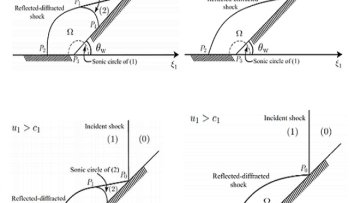As part of our series of research articles deliberately focusing on the rigour and complexity of mathematics and its problems, Oxford Mathematician Gui-Qiang G Chen discusses his work on the Mathematics of Shock Reflection-Diffraction.
Dynamics of molecular networks and developmental landscapes during stem cell differentiation
En route to mending broken hearts
Abstract
We adopt the paradigm of understanding how the heart develops during pregnancy as a first principal to inform on adult heart repair and regeneration. Our target for cell-based repair is the epicardium and epicardium-derived cells (EPDCs) which line the outside of the forming heart and contribute vascular endothelial and smooth muscle cells to the coronary vasculature, interstitial fibroblasts and cardiomyocytes. The epicardium can also act as a source of signals to condition the growth of the underlying embryonic heart muscle. In the adult heart, whilst the epicardium is retained, it is effectively quiescent. We have sought to extrapolate the developmental potential of the epicardium to the adult heart following injury by stimulating dormant epicardial cells to give rise to new muscle and vasculature. In parallel, we seek to modulate the local environment into which the new cells emerge: a cytotoxic mixture of inflammation and fibrosis which prevents cell engraftment and integration with survived heart tissue. To this end we manipulate the lymphatic vessels in the heart given that, elsewhere in the body, the lymphatics survey the immune system and modulate inflammation at peripheral injury sites. We recently described the development of the cardiac lymphatic vasculature and revealed in the adult heart that they undergo increased vessel sprouting (lymphangiogenesis) in response to injury, to improve function, remodelling and fibrosis. We are currently investigating whether increased lymphangiogenesis functions to clear immune cells and constrain the reparative response for optimal healing.
Nanopore sequencing & informatic challenges
Abstract
Oxford Nanopore Technologies aim to enable the analysis of any living thing, by any person, in any environment. The world's first and only nanopore DNA
sequencer, the MinION is a portable, real time, long-read, low cost device that has been designed to bring easy biological analyses to anyone, whether in
scientific research, education or a range of real world applications such as disease/pathogen surveillance, environmental monitoring, food chain
surveillance, self-quantification or even microgravity biology. Gordon will talk the about the technology, applications and future direction.
Stuart will talk about the nanopore signal, computational methods and informatics challenges associated with reading DNA directly.


